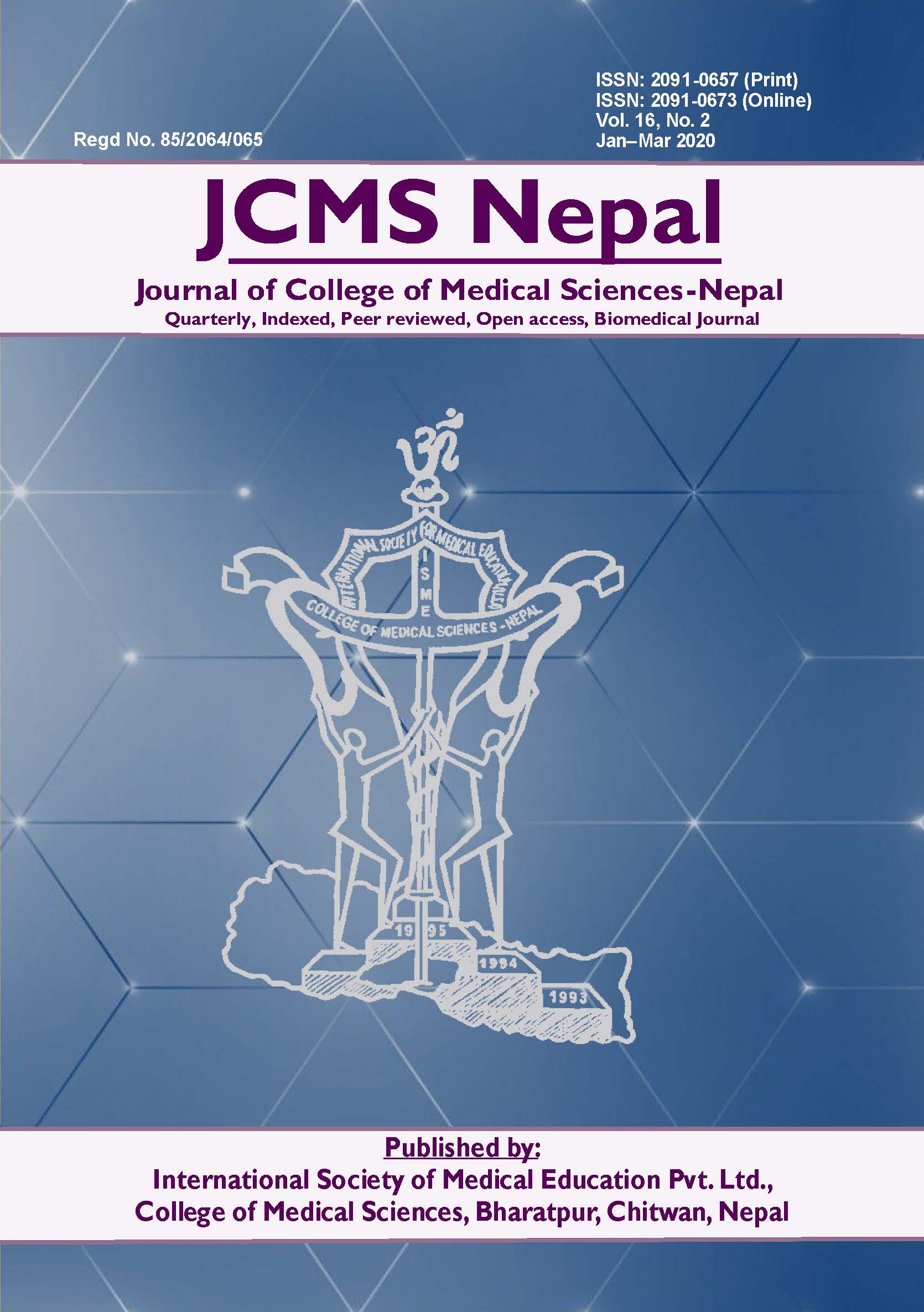Osteoarthritis: Review of Etiopathology, Diagnosis and Management
DOI:
https://doi.org/10.3126/jcmsn.v16i2.28320Keywords:
Key Words: Osteoarthritis, Pathophysiology osteoarthritis, osteoarthritis Treatment, Risk Factors osteoarthritisAbstract
Abstract
Osteoarthritis (OA) is the most common type of arthritis in the world characterized by articular cartilage degeneration with inflammatory components in ageing population. It involves about 10% of adult population and is among the most disabling disease condition. It is multifactorial in its etiology with a number of non-modifiable and modifiable risk factors. Ageing is the most important risk factor followed by obesity in probably genetically susceptible individuals. The end result of inflammation and articular cartilage degeneration arising from repeated overloading of joint, mechanical or biochemical imbalance of repair and degeneration affects not only joint cartilage but also subchondral bone and periarticular structures. Patient mainly presents with variable degree of pain, stiffness and functional limitation with or without swelling and deformity. Diagnosis is clinical and plain imaging is useful for documentation, to see the grading and plan the suitable treatment. There are a number of treatment options in practice each having their pros and cons but no single treatment method is superior to all. There is no cure for it but judicious use of non-pharmacological and pharmacological measures, often in combination in tailored fashion help to ease the patient’s symptoms. Operative intervention in the form of arthroplasty is reserved for end stage arthritis with disabling symptoms not responding with conservative management. Numerous newer treatment modalities are under different phases of clinical trial to test the efficacy and clinical use.
Aim of this narrative review article is to analyze literatures obtained from electronic database and present the synthesized relevant clinical update on etiopathology, diagnosis and treatment modalities of symptomatic osteoarthritis.
Downloads
Downloads
Published
How to Cite
Issue
Section
License
This license enables reusers to copy and distribute the material in any medium or format in unadapted form only, for noncommercial purposes only, and only so long as attribution is given to the creator.




